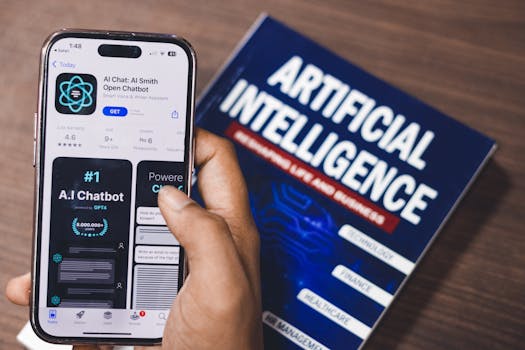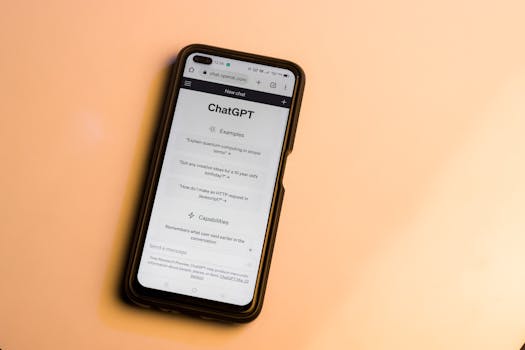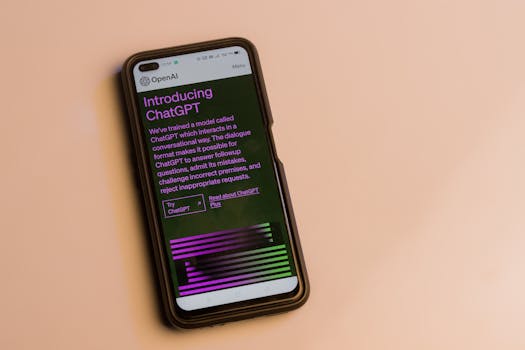Build AI Apps Easily: Your Guide to Making App Using AI
Introduction
Ever looked at those incredibly smart applications that seem to understand your needs before you even voice them and thought, “How do they do that?” The answer, more often than not, is Artificial Intelligence (AI). But what if I told you that making app using AI is no longer an exclusive club for seasoned developers or data scientists? It’s becoming increasingly accessible, even for those of us who might break out in a cold sweat at the sight of complex code.
The truth is, the landscape of app development has been revolutionized by AI. Gone are the days when you needed a PhD to integrate intelligent features. Today, you can leverage powerful AI tools and platforms to bring your innovative app ideas to life with surprising ease. This post is your roadmap to understanding how you can start making app using AI, breaking down the concepts, exploring practical applications, and equipping you with the knowledge to embark on your AI-powered app-building journey.
What Does It Mean to Build AI Apps Easily?
At its core, making app using AI means embedding intelligence into your application. This intelligence can manifest in countless ways, from personalized user experiences and predictive analytics to natural language processing and automated decision-making. The “easily” part comes from the advancements in AI platforms and tools that abstract away much of the complex underlying technology.
Think about it: your smartphone assistant, streaming service recommendations, or even the spam filter in your email – these are all examples of AI at work. These apps are built using AI to learn from data, identify patterns, and then act upon that knowledge. The revolution lies in the fact that you don’t need to build these AI models from scratch anymore. You can harness pre-trained models, low-code/no-code AI platforms, and user-friendly AI APIs to integrate these capabilities into your own projects.
The relevance of AI in app development today cannot be overstated. Businesses across all sectors are looking to leverage AI to gain a competitive edge, improve efficiency, and deliver superior customer experiences. Whether you’re an entrepreneur with a groundbreaking idea, a small business owner looking to automate tasks, or a creative individual wanting to build something unique, understanding how to start making app using AI is a valuable skill.
Deep Dive: Key Components and Approaches for Making App Using AI
So, how exactly do we go about making app using AI without needing to be a Silicon Valley genius? It’s about understanding the building blocks and choosing the right approach for your project. Here are some of the key elements and strategies involved:
- Leveraging Pre-trained AI Models: Many AI tasks, like image recognition, sentiment analysis, or language translation, have already been solved by large organizations. Platforms offer access to these powerful, pre-trained models. You can integrate them into your app via APIs (Application Programming Interfaces) without needing to understand the intricate details of how the model was trained. This is a fantastic way to start making app using AI quickly.
- No-Code/Low-Code AI Platforms: These platforms are designed for accessibility. They provide visual interfaces where you can drag-and-drop AI functionalities, connect them, and configure them to suit your app’s needs. This significantly reduces the need for traditional coding, making AI app development accessible to a broader audience. It truly democratizes making app using AI.
- APIs and SDKs: Companies like Google (Cloud AI), Microsoft (Azure AI), Amazon (AWS AI), and OpenAI offer a suite of APIs and Software Development Kits (SDKs). These tools allow developers to easily integrate specific AI capabilities (e.g., natural language understanding, object detection) into their applications. You essentially “plug in” AI functionality rather than building it.
- Data is King: Even when using pre-built tools, the quality and relevance of your data are crucial for making app using AI that performs well. The AI will learn from the data you feed it, so understanding how to collect, clean, and prepare your data is a vital step.
- Focus on User Experience (UX): AI is a powerful tool, but its success in an app hinges on how well it enhances the user experience. When making app using AI, always ask: “How does this AI feature benefit the user?” Is it making the app more intuitive, personalized, or efficient?
- Iterative Development: AI development is often an iterative process. You’ll likely start with a basic AI integration, gather user feedback, and then refine the AI’s performance over time. This continuous improvement loop is essential for making app using AI effectively.
- Understanding AI Concepts (at a High Level): While you don’t need to be an expert, having a basic grasp of concepts like machine learning, neural networks, and natural language processing can help you make informed decisions about which AI tools and approaches are best suited for your project when making app using AI.
The core principle is to leverage existing AI infrastructure and models rather than reinventing the wheel. This allows you to focus on the unique aspects of your app and the user problems you’re solving, making making app using AI a much more achievable goal.

Real-World Use Cases: Seeing AI Apps in Action
To truly appreciate the power and ease of making app using AI, let’s look at some real-world examples and how you might approach building similar functionalities.
1. Personalized Recommendation Engines
What it is: Apps like Netflix, Spotify, and Amazon suggest content or products based on your past behavior and preferences. This is a classic AI application that significantly boosts user engagement.
How to build it (simplified): You could use AI services that specialize in recommendation systems. These services often take user interaction data (what they’ve watched, listened to, or bought) and generate personalized recommendations. Many platforms offer APIs that abstract the complex algorithms involved, making making app using AI for recommendations more straightforward.
Tip: Start with a clear understanding of the data you can collect about user behavior. The more relevant data, the better the recommendations.

2. Smart Chatbots for Customer Support
What it is: Many websites and apps now feature chatbots that can answer frequently asked questions, guide users, or even handle simple transactions. These are powered by Natural Language Processing (NLP).
How to build it (simplified): Platforms like Dialogflow (Google), Amazon Lex, or Microsoft Bot Framework allow you to build conversational interfaces. You define intents (what the user wants) and entities (key information in their request), and the platform handles the NLP. You can then integrate these chatbots into your app. This is a very popular route for making app using AI that interacts with users conversationally.
Expert Opinion: “The key to a successful AI chatbot isn’t just understanding words, but understanding intent and context. Investing time in training your chatbot with diverse user queries will yield better results,” says AI consultant Sarah Chen.
3. Image and Object Recognition Apps
What it is: Apps that can identify objects in images, recognize faces, or categorize visual content. Think of apps that identify plants from a photo or tag photos automatically.
How to build it (simplified): Cloud providers offer powerful image recognition APIs. You can send an image to the API, and it will return labels or descriptions of what it sees. For more specific object detection, you might use pre-trained models available through ML frameworks or cloud services. This makes making app using AI for visual tasks quite accessible.
Tip: Ensure your images are clear and well-lit for optimal recognition performance when making app using AI that relies on vision.

4. Predictive Text and Autocompletion
What it is: Your phone keyboard suggesting the next word or sentence as you type is AI at work, learning your writing patterns.
How to build it (simplified): While building a sophisticated predictive text engine from scratch is complex, many mobile development frameworks have built-in support or libraries for incorporating autocompletion features. For more advanced predictive capabilities, you might explore custom AI model deployment, but often, leveraging platform-specific tools is the easiest route for making app using AI that assists typing.
For further exploration into how AI is transforming user interactions, check out our post on Coursera’s Machine Learning courses a valuable external resource.
Pros and Cons of Making App Using AI
| Pros | Cons |
|---|---|
| ➕ Increased Automation and Efficiency | ➖ High initial development costs for complex AI models |
| ➕ Enhanced Personalization and User Experience | ➖ Dependence on data quality and availability |
| ➕ Ability to analyze large datasets for insights | ➖ Potential for bias in AI algorithms if not carefully managed |
| ➕ Competitive advantage and innovation | ➖ Ongoing maintenance and updates for AI models |
| ➕ Creation of entirely new functionalities | ➖ Ethical considerations and potential privacy concerns |
Conclusion
The journey of making app using AI is more accessible and exciting than ever before. By understanding the core concepts, leveraging existing tools and platforms, and focusing on how AI can genuinely enhance the user experience, you can bring intelligent applications to life. Whether you’re aiming for smart recommendations, intuitive chatbots, or advanced visual analysis, the building blocks are within reach.
Don’t be intimidated by the term “Artificial Intelligence.” Think of it as a powerful toolkit that, when used wisely, can unlock incredible potential in your app. Start exploring the various AI-as-a-service platforms, experiment with no-code AI builders, and most importantly, let your creativity guide you.
Ready to take the leap? Start by identifying a specific problem your app can solve with AI and then research the tools that best fit your technical skills and project needs. The future of app development is intelligent, and you’re invited to be a part of it. Happy building!